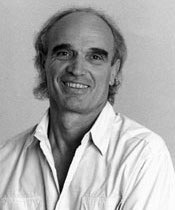 Visceral Osteopathy
Visceral Osteopathy
What is Visceral Osteopathy?
Visceral Osteopathy is an expansion of the general principles of osteopathy which includes a special understanding of the organs, blood vessels and nerves of the body (the viscera). Visceral Osteopathy relieves imbalances and restrictions in the interconnections between the motions of all the organs and structures of the body. Jean-Piere Barral RPT, DO built on the principles of Andrew Taylor Still DO and William Garner Sutherland DO, to create this method of detailed assessment and highly specific manipulation. Those who wish to practice Visceral Osteopathy train intensively through a series of post-graduate studies. The ability to address the specific visceral causes of somatic dysfunction allows the practitioner to address such conditions as gastroesophageal reflux disease (GERD), irritable bowel (IBS), and even infertility caused by mechanical restriction.
Visceral Osteopathy is Useful For:
- Swallowing difficulties
- Digestive problems
- Headaches
- Incontinence
- Back and neck pain
- Shoulder and hip pain
- Carpal tunnel and other repetitive strain injuries
- Whiplash and other physical trauma
- And many other conditions
Viscera: The Soft Organs
Viscera refers to the organs and their soft membranes. Viscera have slippery surfaces and are attached to the walls of body cavities and the spine by ligaments. As your spine moves the organs attached to it must also move. The internal organs must allow the trunk to bend and twist and the diaphragm to move during breathing. The organs move in ways which are determined by their supporting ligaments. Surgical, infectious, or other adhesions and tensions can alter or restrict these movements and stress the organs.
If your viscera are not able to move properly it will create stiffness or pain elsewhere in your body. If you can hear creaks and feel pain on normal movement this is a sign that you are at risk. The longer this continues, the greater the strain on your body and the less of your energy that can be used for keeping you healthy.
Visceral Restrictions
You can see visceral restrictions reflected in your posture. When an organ can no longer move normally it sets up abnormal points of tension that your body must now move around. This can happen gradually and it may only be when someone tells you that you are no longer standing straight that you notice you have stiffened up and some movements are difficult.
When you have tension in the front of your body it makes you bend forward. When the tension is to one side it makes you twist toward that side. There is a saying in Visceral Osteopathy that “the body hugs the lesion”. This means that a person will look as if they are trying to wrap themselves around the tense area.
Why Do Restrictions Happen?
There are many ways that visceral restrictions can happen:
- After surgery as your wound heals it can form tight scarred areas. The scarring can be deep, and as it takes months or even a year to form; it often goes unnoticed.
- Viscera can be injured if your body suffers trauma, such as a car crash. The shock from the seatbelt can travel through your chest and be felt in the stomach, heart and left kidney.
- You may have been born with a damaged organ or a condition such as scleroderma. Even though that condition may be untreatable, it is usually possible to treat other areas to improve your general health and help you to compensate more easily.
A Subset of Visceral Osteopathy: Treating the Brain

A specific subset of visceral osteopathy developed by my dear friend, Bruno Chikly, MD, DO, involves the post-graduate study and treatment of the brain and its surrounding tissues. The practice of treating the brain parenchyma (surrounding brain tissues), nuclei (nerve beginnings) and fluids allows the practitioner to address many neurological issues. It is a very advanced technique and currently very few osteopaths incorporate it into their practice. It can sort out both acute and long standing issues that other types to treatment cannot get to the root of. Conditions such as brain fog, memory issues, Parkinson’s disease, headache, seizures, hormone imbalance, unsteady gait or vertigo, sight difficulties and even PTSD have been helped by this specific form of osteopathic treatment.
